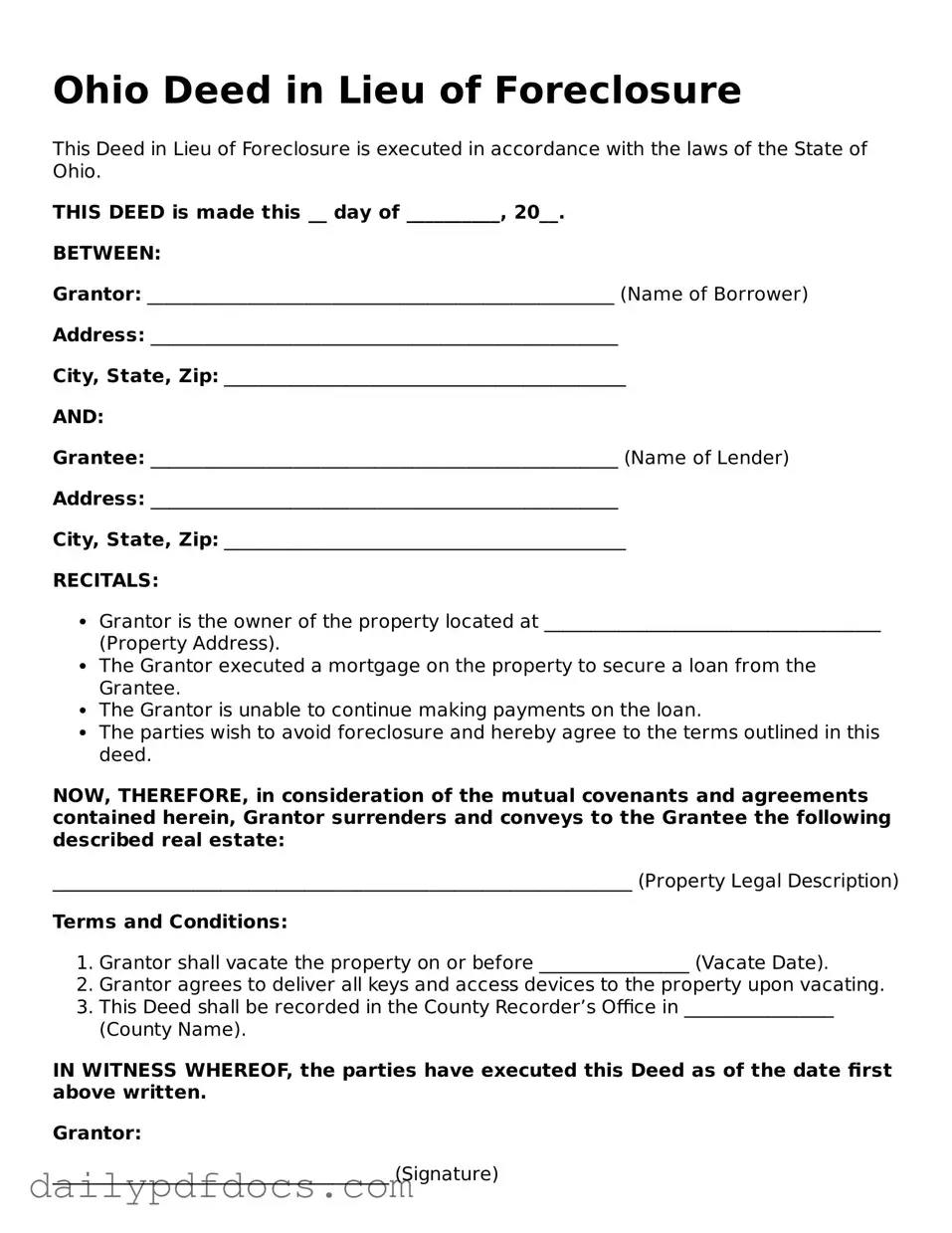Ohio Deed in Lieu of Foreclosure
This Deed in Lieu of Foreclosure is executed in accordance with the laws of the State of Ohio.
THIS DEED is made this __ day of __________, 20__.
BETWEEN:
Grantor: __________________________________________________ (Name of Borrower)
Address: __________________________________________________
City, State, Zip: ___________________________________________
AND:
Grantee: __________________________________________________ (Name of Lender)
Address: __________________________________________________
City, State, Zip: ___________________________________________
RECITALS:
- Grantor is the owner of the property located at ____________________________________ (Property Address).
- The Grantor executed a mortgage on the property to secure a loan from the Grantee.
- The Grantor is unable to continue making payments on the loan.
- The parties wish to avoid foreclosure and hereby agree to the terms outlined in this deed.
NOW, THEREFORE, in consideration of the mutual covenants and agreements contained herein, Grantor surrenders and conveys to the Grantee the following described real estate:
______________________________________________________________ (Property Legal Description)
Terms and Conditions:
- Grantor shall vacate the property on or before ________________ (Vacate Date).
- Grantor agrees to deliver all keys and access devices to the property upon vacating.
- This Deed shall be recorded in the County Recorder’s Office in ________________ (County Name).
IN WITNESS WHEREOF, the parties have executed this Deed as of the date first above written.
Grantor:
____________________________________ (Signature)
____________________________________ (Printed Name)
Grantee:
____________________________________ (Signature)
____________________________________ (Printed Name)
STATE OF OHIO
County of ________________
Subscribed and sworn to before me this __ day of __________, 20__.
____________________________________ (Notary Public)
My Commission Expires: ________________
